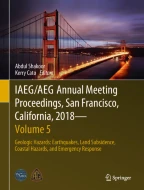
The Sendai Framework for Action identified land use planning and legislation as a priority action for disaster risk reduction (DRR). Socioeconomic losses associated with natural hazards are increasing, particularly from inappropriate land use. The mechanisms of hazard mapping and structural/non-structural measures to reduce the exposure and vulnerability of elements at risk are outlined in this paper. Concepts and requirements for natural hazard assessments need to be documented and applied to ensure their success. These measures need to be applied at a local level to ensure a more efficient level of risk reduction. Due to financial constraints, councils do not always undertake appropriate hazard mapping; however, they can partner with institutions such as universities to develop hazard and/or risk maps to reduce the costs. Local level decision making is constrained by political and economic pressures, resulting in some natural hazard prone areas being developed. Tools such as explicit civil or administrative responsibilities for risk reduction should be promoted to avoid arbitrary decisions in those areas. Examples showing how DRR can be improved are presented in this paper.
This is a preview of subscription content, log in via an institution to check access.
eBook EUR 117.69 Price includes VAT (France)
Softcover Book EUR 158.24 Price includes VAT (France)
Hardcover Book EUR 158.24 Price includes VAT (France)
Tax calculation will be finalised at checkout
Purchases are for personal use only